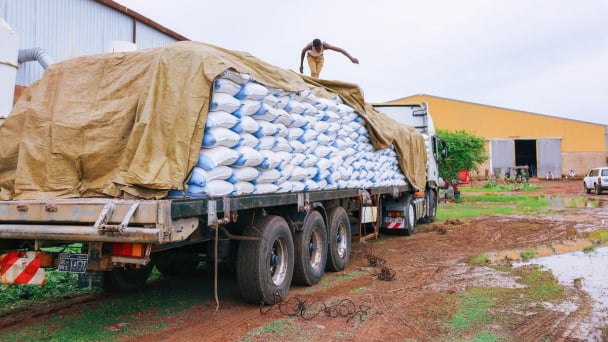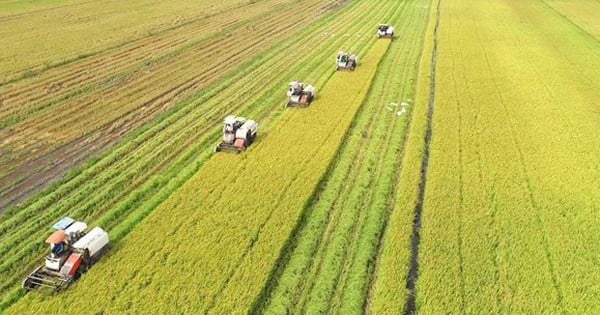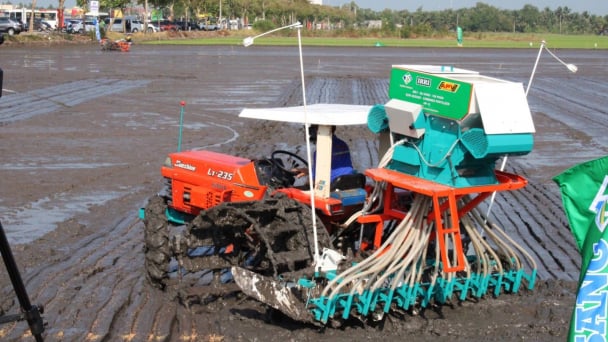May 21, 2025 | 10:07 GMT +7
May 21, 2025 | 10:07 GMT +7
Hotline: 0913.378.918
May 21, 2025 | 10:07 GMT +7
Hotline: 0913.378.918

The agricultural sector sets an export target of US$ 25.8 billion for the year's first six months.
In the first 5 months of the year, the agriculture and rural sector actively implemented key tasks to implement the 2023 Plan. In May, agro-forestry-fishery production focused mainly on caring for and harvesting winter-spring crop rice and vegetables; sowing summer-autumn rice; removing difficulties in raising livestock, poultry and aquaculture; accelerating the progress of afforestation; supporting and encouraging fishermen to actively "stick to the sea" and strictly implement IUU regulations.
According to statistics, in the first 5 months of 2023, the total export and import turnover of agricultural, forestry, and fishery products was estimated at US$ 36.96 billion. Exports were US$ 20.26 billion, down 11.1% over the same period last year; imports US$ 13.15 billion, down 8.7%; trade surplus US$ 3.55 billion, down 21.1%.
Although the major export markets of Vietnam's agricultural, forestry, and fishery products are gradually growing again, such as China reopening or exports to Japan and Asia increased again, the world economy continues to face many difficulties, including high inflation in some developed countries, and tight monetary policies, especially in large markets such as the USA and Europe, causing businesses to struggle in signing and fulfilling orders.
Many countries have also implemented policies to strengthen the protection of domestically produced products and goods and boost agricultural production to supply proactively. Domestically, fruit products have an abundant, relatively stable supply. Many types of fruit are at the time of harvest (mango, durian, jackfruit, lemon, and lychee). Raising livestock and poultry is still met with ample dfficulties.
The weather is abnormal. El Nino is causing hotter and hotter days, and the risk of water shortage for agricultural, forestry, and fishery production and forest fires is very high in many localities. Diseases on crops and livestock also have risks of outbreaks which potentially affect the agro-forestry-fishery production and business.
Faced with that situation, the agricultural sector sets a target that the export turnover of the first 6 months of 2023 must equal to US$ 25.8 billion or even exceed this number.
To do this, it is necessary to promote the development of domestic consumption and export markets. Continue to handle market issues to create favorable conditions for exporting agricultural and aquatic products, especially to the markets of China, the United States, the EU, and the Eurasian economic union...
Take advantage of new generation FTAs, especially the CPTPP and EVFTA Agreements, to promote the export of crucial agricultural, forestry, and fishery products and support enterprises to sign new export orders; Coordinating to support the protection of trademarks and geographical indications for potential export products of Vietnam abroad.
The agricultural sector is also determined to monitor and grasp the price and supply of essential food products and report to the Domestic Market Executive Team and the Government's Price Steering Committee. Coordinate with localities to support connection and promote the processing and consumption of agricultural products in the harvest season.
Organize activities, such as: Connecting forum to promote the export of spices and spices to the EU market; 970 Forums to support the connection of agricultural product consumption; Seminar on disseminating information, market regulations, and consumer tastes, connecting consumption through the system of commercial and agricultural counselors in markets, domestic retail distribution chains for some goods with the large output when harvested in June (litchi, jackfruit, rambutan, dragon fruit, lemon).
In the first 5 months of the year, many main export products decreased in export value compared to last year, so the total export turnover was estimated at US$ 20.26 billion, down 11.1%. In which, agricultural products reached US$ 10.3 billion, up 9.9%; livestock production reached US$ 190 million, up 34.5%; seafood reached US$ 3.47 billion, down 25.9%; forest products reached US$ 5.52 billion, down 26.8%; Production input reached US$ 779 million, down 25.9% and salt reached US$ 2.0 million, down 11.9%.
In the first five months of the year, the export value of agricultural, forestry and fishery products to markets in Asia reached US$ 9.73 billion, up 2.3%; America reached US$ 4.42 billion, down 34.6%; Europe reached 2.42 billion, down 13.2%; Africa reached 327 million, down 5.6%; Oceania reached US$ 280 million, down 28%.
China, the United States and Japan continue to be the three largest export markets for agro-forestry-fishery products; export value to China accounted for 20.4%, up 2.9% over the same period last year; The United States accounted for 19.8%, down 35.2% and Japan accounted for 7.8%, down 1.2%.
Translated by Ha Phuc

(VAN) In 2024, over 295 million people across 53 countries and territories faced acute hunger—an increase of almost 14 million people compared to 2023, while the number of people facing catastrophic levels of hunger reached a record high.

(VAN) World Environment Day 2025 (June 5) carries the theme 'Beat Plastic Pollution' continuing to emphasize the global urgency of addressing the plastic waste crisis.

(VAN) This was the assessment shared by experts at the workshop titled 'Assessing the Role and Potential of Low-Emission Rice Production Systems in Vietnam,' held on the morning of May 19.

(VAN) Cai Rong Port is the fisheries control center of Quang Ninh, helping to monitor fishing vessels, combat IUU fishing, and remove the EC's 'yellow card'.

(VAN) The German Agricultural Society (DLG) explores the possibility of establishing a mechanization service center in Vietnam’s Mekong Delta to support farmers in accessing and utilizing advanced machinery.

(VAN) On May 16, the Department of Water Resources Management, in collaboration with the Food and Agriculture Organization of the United Nations (FAO), held a signing ceremony for the GEF-8 project document.

(VAN) Food safety, mechanization, vocational training, and market opening are key areas of cooperation expected between the Vietnamese Government and the Federal Republic of Germany.